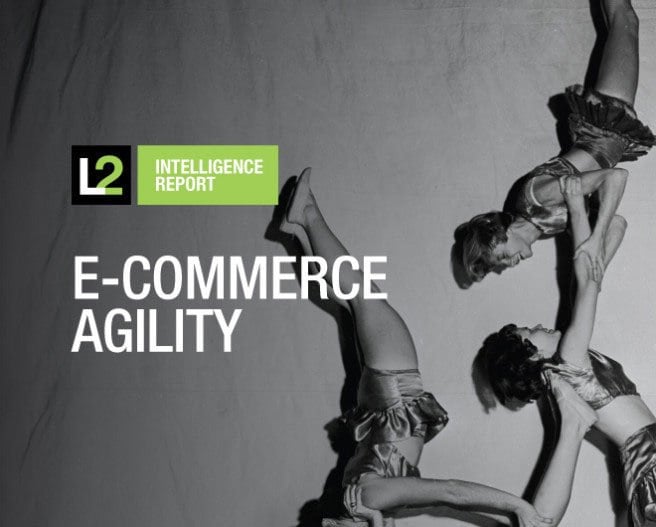Agility in eCommerce — the Key to Unlocking Revenues for CMOs


Sharing perspectives on the latest trends and tips to help eCommerce brands stay ahead to engage and drive revenue.
Last month, enterprise cloud commerce provider Demandware and business intelligence service L2 released the findings of a new joint report that examines the factors that most impact retailers’ ability to be agile with their global e-commerce operations. The report, E-commerce Agility, benchmarked more than 80 top retail brands against their ability to proactively manage and execute against three critical strategies for commerce success.
- Dynamic content creation — the frequency with which a brand is able to change site content to keep consumers engaged, impressed and returning on a regular basis.The primary element measured in the study was the number of landing page changes that were detected over a 12-week period, manifested through featured items, promotions and marketing campaigns.
- Integration of new technologies — an assessment of how well a brand’s site has been kept current and innovative across four dimensions of customer experience capabilities: content and commerce, search and navigation, customer service, and omni-channel.
- Ease of new market entry — the pace of a brand’s year-over-year rollout of retail store locations and country-specific websites in new geographies. Findings are tied back to e-commerce platforms and infrastructure.
- Agility correlates to strong financial performance.The analysis reveals that retailers with high degrees of agility — based on the three critical strategies described above — have stronger financial performance. Cloud brands not only had the greatest sales and earnings growth but also the highest overall site rankings, driven by content, customer service and search. Of the 80+ companies evaluated, cloud solutions saw an average of 12 percent in annual sales growth over the past five years, as compared to 9 percent and 6 percent growth for on-premise and in-house solutions, respectively.
- Agility levels are superior and sustained with cloud platforms.The study shows a direct correlation between agility levels and the type of e-commerce platform implemented. Retailers that use cloud commerce platforms exhibited higher degrees of agility, a stronger ability to provide engaging brand experiences, and broader international reach. Cloud-powered sites have remained at the vanguard of e-commerce innovation, outperforming all other site types.
- Agility accelerates new market entry and expansion.International expansion presents a huge growth opportunity for retailers and has become a popular means for boosting returns and driving retailers’ bottom lines. E-commerce is a low-risk way for brands to test new markets or complement existing store footprints. Brands that operate on a cloud platform have a competitive edge because they are able to leverage ready-built infrastructure and technology integrations to launch new sites more quickly and are able to strike the perfect balance between brand control and localized merchandising.